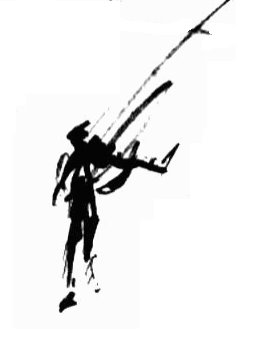Asanas:
It seems that in Iyengar yoga a relatively long beginning stage includes learning only asanas, not any combinations.
The most basic Tadasana (tree pose) required details in use of the feet, involvement of toes, activation of arches, calf muscles turning a certain spiral and the thighs the opposite, all practiced with blocks and ropes and belts separately overtime, a certain pulling in of the bones towards the joint (this would be blasphemy in Alexander Technique, and by the way required a certain careful abandoning of former ideas: “OK I’m in a new realm of ideology/practice, but I still don’t fully trust it, but I should try to an extent and see if my body really rebels.”), not to mention the use of the arms (I had a long struggle in use of my arms, the “internal rotation” which seemed impossible on the right side) the full and full extensions, and my tendency of an extra lift of the chest, causing a collapse of back (“Keep your back broad!” the teacher kept demanding.). On occasion, I felt in a pose, as if all the body was locked into something. It’s like the body is tied to itself with muscle activation and stretch, yet, you are asked to keep the face neutral, and the throat and belly soft.
This is demand for the division of attention. Once in a while in a pose, midst the resistances and the inner fights, I feel the every part of my body actively participating.
Sometimes, it seems like a certain pose was made just for me, for my poor body, to cut through the physical and the emotional gunk that’s built up, and sometimes something very deep is addressed. I often realize it afterwards, when relaxed into shavasana, or when walking back to the subway station, deeply different from how I walked forth.
This is what I understand so far. More or less. I have doubts about shoulder stands, head stands, but I know they are good for my arms’ strength,… I asked about it once: “Why do we do shoulder stands?” Teacher said “I can’t talk about it in class. there is a lot of information online. For you, it’s good for your shoulders.”
The system is set up in a way that you are encouraged, you can complete levels, learn more and more complex poses, and then there are levels of advancement for teachers. So there is a desire to complete, to succeed. And there is a height, the towering peak that is displayed in images of Iynegar himself. I look at his poses with a degree of curiosity, awe, disgust and doubt. Why would I do such a thing to my body. I prefer to be a beginner, so that my poses are less weird.
Another aspect of preference to other flow classes: at least there is some interaction with other people who take the class, we know each other a bit, we chat, we see each others’ weaknesses. In a way, the human connection is part of what makes me go back. In the usual drop in class, you are alone on your rectangular matt, in a very full room.
So why don’t I practice at home? Even only the few poses that I feel I know?
